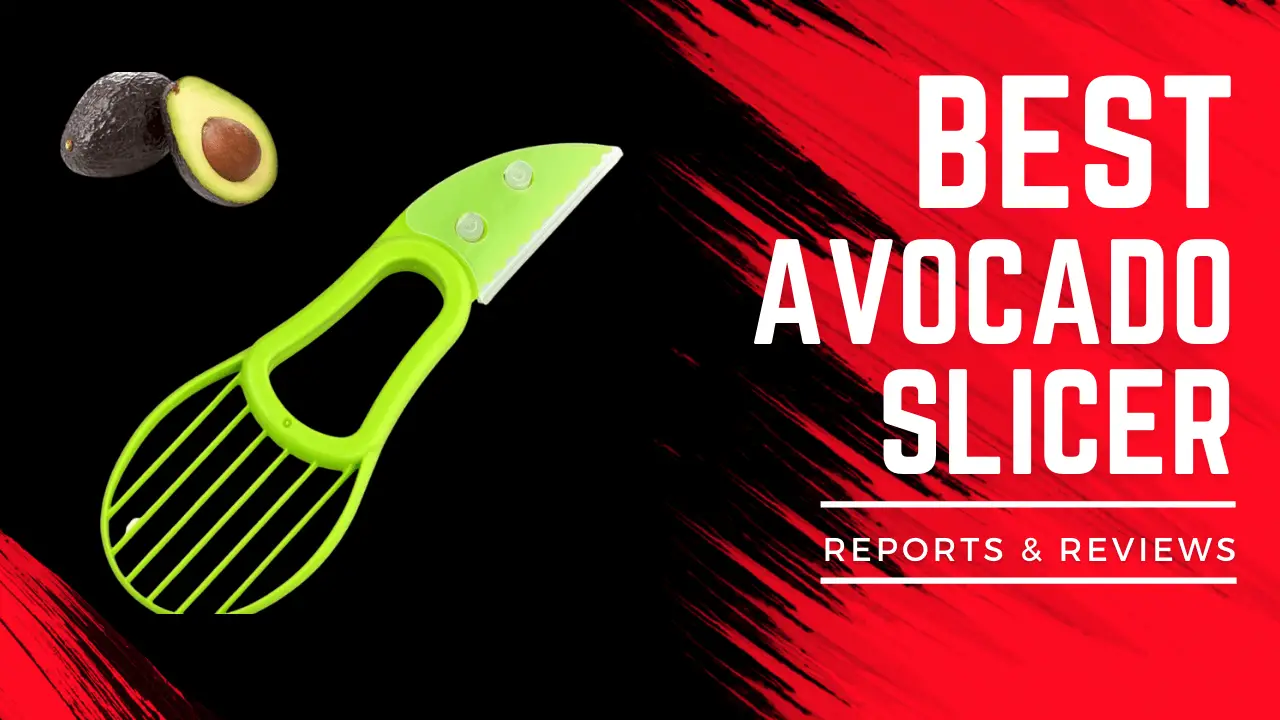Short answer: Dehydrating mango slices typically takes around 8 to 12 hours at a temperature of 135°F (57°C).
Dehydrating mango slices is a popular method of preserving their delicious flavor and extending their shelf life. By removing the moisture from the fruit, the mango slices become chewy and retain their natural sweetness. The dehydration process involves exposing the slices to low heat for a specific duration, allowing the moisture to evaporate while preserving the essential nutrients. The length of time required to dehydrate mango slices depends on various factors such as the thickness of the slices, humidity levels, and the dehydrator’s temperature setting. Typically, it takes around 8 to 12 hours at a temperature of 135°F (57°C) to transform fresh mango slices into delightful, dried treats.
What Are Dehydrated Mangoes?
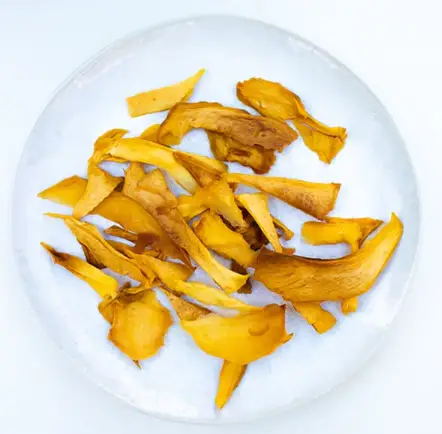
>Dehydrated mangoes are mango slices or pieces that have been subjected to a dehydration process, where the majority of their moisture content is removed. Dehydration involves exposing the mangoes to low heat for an extended period, which evaporates the water while preserving the fruit’s nutrients. The resulting dehydrated mangoes have a chewy texture and concentrated flavor, with a longer shelf life compared to fresh mangoes. They are often enjoyed as a healthy and convenient snack or used in various culinary applications such as baking, trail mixes, or as toppings for desserts.
How Long To Dehydrate Mango Slices?
When it comes to dehydrating mango slices, the process typically takes around 8 to 12 hours. It is advisable to set the dehydrator temperature at 135°F (57°C) for optimal results. The duration may vary based on factors such as slice thickness, humidity levels, and the specific dehydrator being used.
Why Mangoes Are Dehydrated?
Mangoes are dehydrated to preserve them and extend their shelf life. Dehydration involves removing the moisture from the fruit, which inhibits the growth of bacteria, yeast, and mold that cause spoilage. Dehydrated mangoes become lightweight and compact, making them convenient for storage and transportation. Additionally, dehydrating mangoes concentrates their flavors and natural sweetness, resulting in a delicious and nutritious snack. Dehydrated mangoes can be enjoyed as a standalone snack, used in baking, added to trail mixes, or incorporated into various recipes.
How To Dehydrate Mangoes?
Method1:
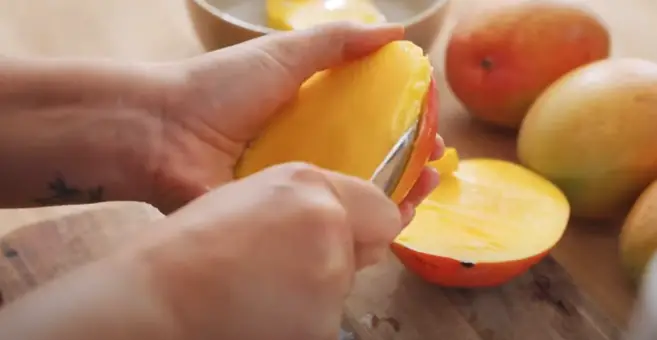
Step 1: Peel the mangoes and ensure they are ready for slicing.
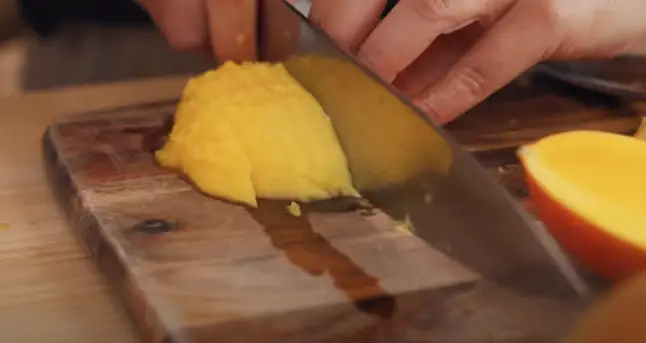
Step 2: Slice the mangoes evenly to promote uniform dehydration.
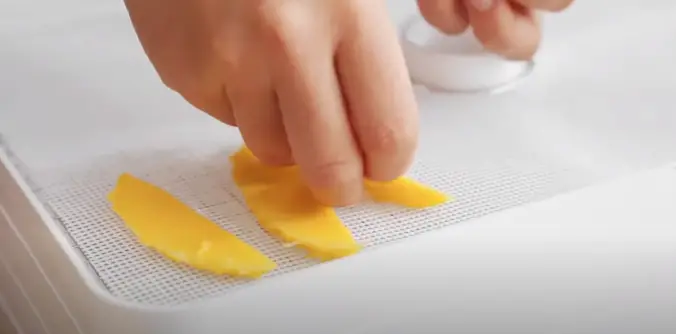
Step 3: Prepare the dehydrator trays and place the mango slices on them.
Step 4: Set the dehydrator temperature to 105 degrees Fahrenheit (40.6 degrees Celsius).
Step 5: Allow the mango slices to dehydrate overnight or for the recommended time.
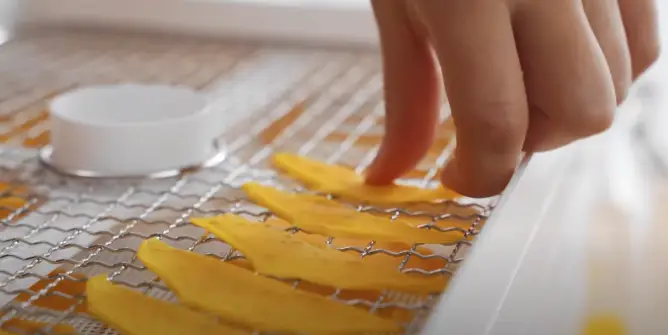
Step 6: Once fully dehydrated, remove the dried mango slices from the dehydrator.
Step 7: Assess the results and enjoy your homemade dehydrated mangoes.
Method 2:
Step 1: Prepare the mangoes by removing the cheeks and scooping out the flesh.
Step 2: Slice the mangoes to a thickness of 5 millimeters.
Step 3: Load the mango slices onto the dehydrator trays, leaving space between them for even dehydration.
Step 4: If using silicone mats, place the mango slices on them, ensuring even spacing.
Step 5: Stack the trays in the dehydrator, making sure they are properly aligned.
Step 6: Set the time and temperature settings on the dehydrator. In this case, the temperature was set at 50 degrees Celsius (122 degrees Fahrenheit) and the time was set for 8 hours.
Step 7: Allow the mango slices to dehydrate for 8 to 12 hours, depending on the desired texture.
Step 8: Once fully dehydrated, remove the dried mango slices from the trays or silicone mats.
Step 9: Store the dried mangoes in an airtight container or vacuum seal them for longer-term storage.
Method 3:
Step 1: Prepare the mangoes by peeling them. The host uses a vegetable peeler, but any suitable tool can be used.
Step 2: Cut the mangoes into slices, aiming for a thickness of about a quarter of an inch.
Step 3: Arrange the mango slices on the dehydrator trays, leaving space between them.
Step 4: Use a dehydrator with temperature control. The host suggests setting it between 95 and 105 degrees Fahrenheit (35-40.6 degrees Celsius) to keep the enzymes and nutrients alive.
Step 5: Allow the mango slices to dehydrate for approximately 30 to 34 hours at the low-temperature setting. The exact time may vary, so it’s important to check periodically.
Step 6: The desired texture is pliable, similar to gummy bears, rather than being overly crunchy.
Step 7: Once fully dehydrated, transfer the dried mango slices to jars or storage containers.
Step 8: Optionally, add a desiccant pack to absorb any remaining moisture and prevent mold growth.
Health Benefits Of Dried Mangoes
Reduce signs of aging: Dried mangoes can nourish the skin and help reduce signs of aging, such as wrinkles and fine lines, due to their constant nourishment.
Healing acne: The peel of dried mangoes is an excellent remedy for curing and preventing acne breakouts, thanks to its high antioxidant content.
Aid digestion: Dried mangoes are rich in dietary fiber, which aids the digestion process. They also contain nutrients that activate digestive enzymes, improving food digestion efficiency.
Strengthen bones: Dried mangoes are a great source of calcium, an essential nutrient for maintaining and strengthening healthy bones. Elderly individuals, who often have more brittle bones, may benefit from consuming dried mangoes.
FAQs
Can you leave a food dehydrator on overnight?
Yes, it is generally safe to leave a food dehydrator on overnight. Most dehydrators are designed to be left on for several hours, and some even have timers to ensure safe operation. However, it’s still recommended to check your user’s manual for specific instructions related to your device and ensure the dehydrator is in a safe, well-ventilated area away from any flammable materials.
How do you know when mangoes are dehydrated?
Mangoes are usually dehydrated when they have lost most of their moisture and have a leathery, slightly sticky texture. They should be pliable and not brittle. The color should be a deep yellow, and the pieces should have shrunk considerably. The drying time varies based on the thickness of the slices and the temperature setting, but it can often take 8-14 hours.
Does dehydrated mango go bad?
Dehydrated mango, if properly stored, can last for many months, and sometimes even years. However, it can still go bad over time or if it isn’t stored correctly. Signs that dehydrated mango has spoiled include mold growth, off smells, or significant changes in texture or color. Always store dehydrated fruit in a cool, dry place and in a sealed container to prolong its shelf life.
What preservative is in dried mango?
Commercially dried mango often contains a preservative called sulfur dioxide to maintain color and extend shelf life. However, this depends on the brand and its specific processing methods. Some brands offer unsulfured dried mango, which doesn’t have any preservatives but may have a darker color and shorter shelf life.
Should dried mango be brown?
Dried mango is usually a deep yellow or orange color. If it turns brown, it could be due to oxidation or the absence of preservatives such as sulfur dioxide, which helps to maintain the fruit’s original color. A slightly darker color doesn’t necessarily mean the mango is bad, but a significant color change or off smell could indicate spoilage.
Conclusion
The exact time to dehydrate mango slices can vary depending on several factors such as the thickness of the slices, the temperature setting on the dehydrator, and the specific type of dehydrator used. However, generally speaking, it can take between 8-14 hours to dehydrate mango slices. It’s important to remember that the goal of dehydration is to remove most of the moisture from the fruit, so the end product should be flexible and leathery, not brittle. Check the slices periodically throughout the dehydration process to prevent over-drying. Always remember to let the slices cool before storing them in a sealed container to prevent moisture buildup, which could lead to spoilage.

Mario Batali is a renowned author, food enthusiast, and passionate chef who has dedicated his life to exploring the world of culinary arts. With a love for sharing his knowledge and experiences, Mario has become a prominent figure in the food blogging community, inspiring countless readers with his creativity and expertise.
In addition to his culinary prowess, Mario Batali is also a talented writer with a flair for engaging storytelling. He launched his own food blog to share his recipes, cooking tips, and personal experiences in the kitchen. Over time, Mario’s blog gained a loyal following of food enthusiasts who appreciate his unique approach to cooking and his dedication to using only the finest ingredients.
Mario Batali’s passion for food and his commitment to sharing his knowledge with others have made him a true inspiration in the world of culinary arts. Through his blog, cookbooks, and public appearances, Mario continues to spread his love of food and the joy of cooking with his ever-growing fanbase.


